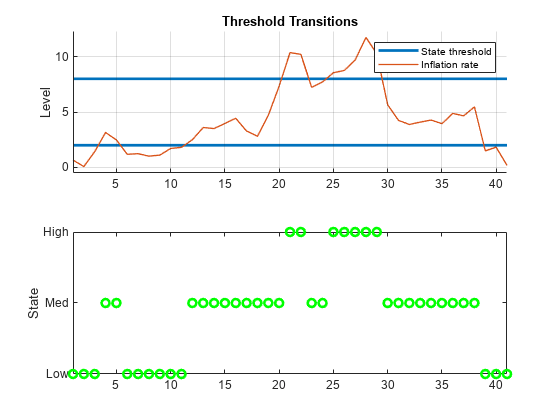ttstates
Syntax
Description
Examples
Input Arguments
Output Arguments
Algorithms
In threshold-switching dynamic regression models (tsVAR), state
transitions occur when a threshold variable crosses a transition mid-level. Discrete
transitions result in an abrupt change in the submodel computing the response. Smooth
transitions create weighted combinations of submodel responses that change continuously with
the value of the threshold variable, and state changes indicate a shift in the dominant
submodel. For more details, see tsVAR.
Version History
Introduced in R2021b
